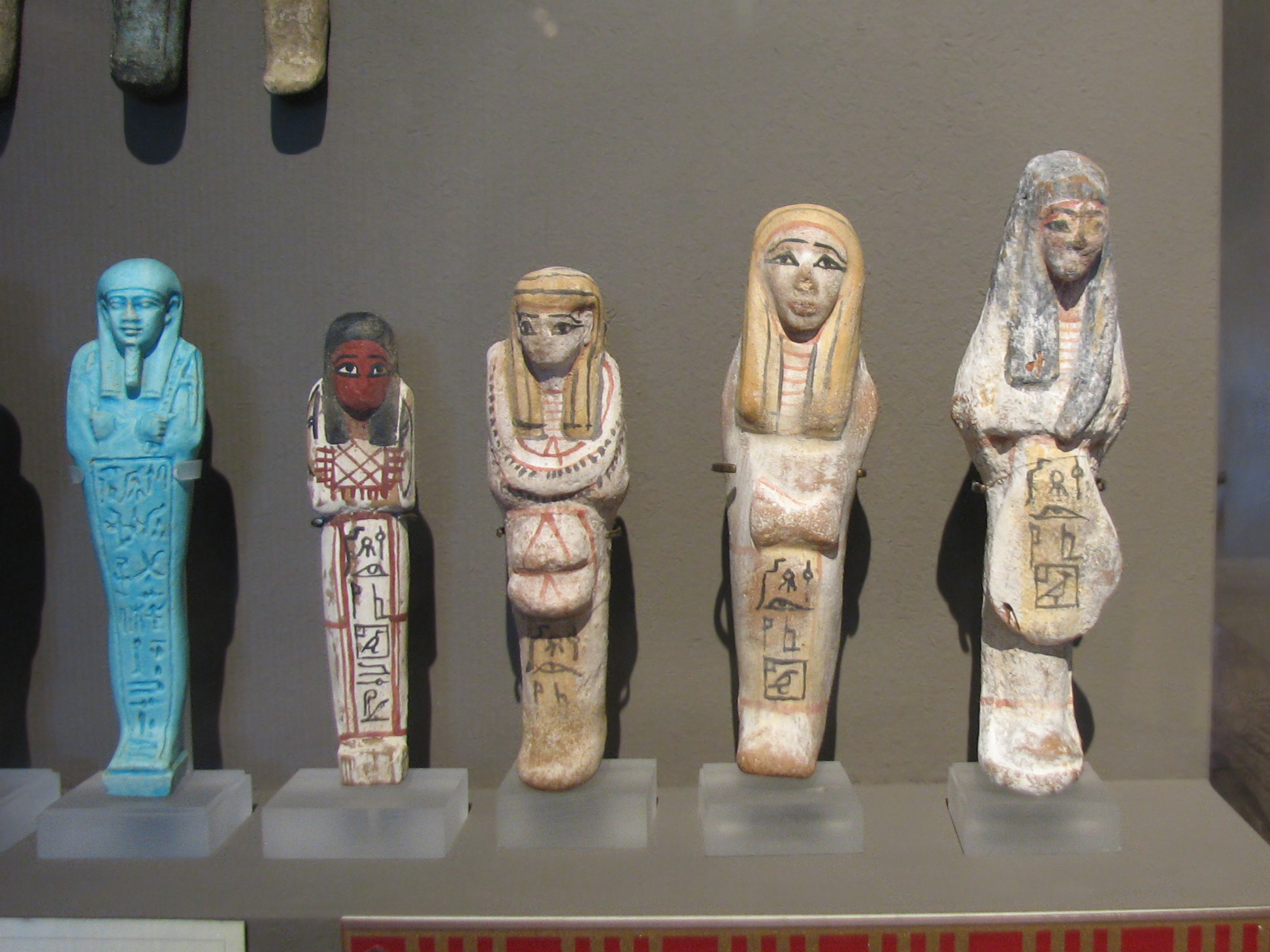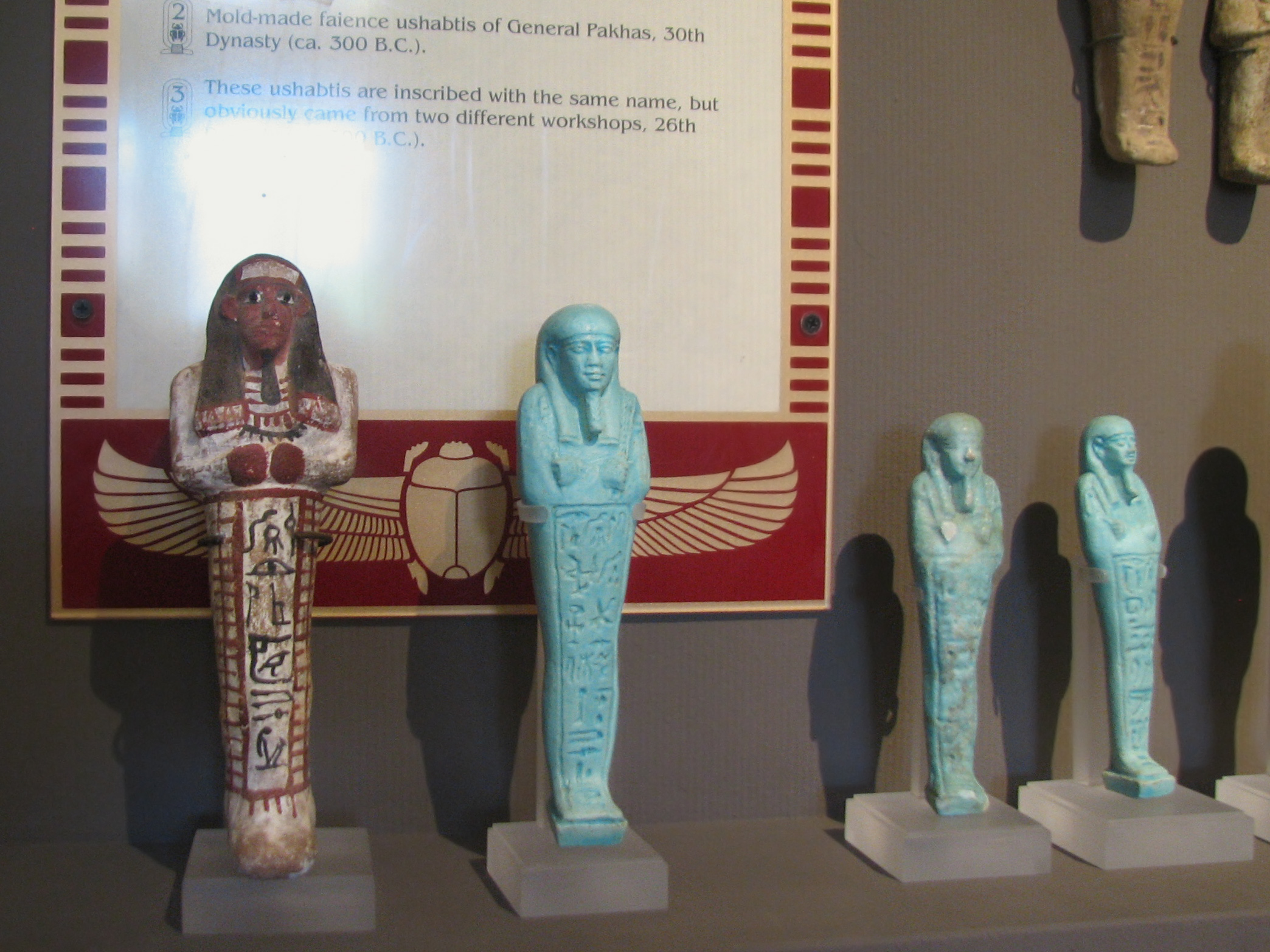
"Individually made, these painted wood and pottery workers and foremen are inscribed with the name Hat-hor, a woman of the 19th Dynasty (ca. 1250 BCE)
Balboa Park Museum of Man

On all of those shabtis, we can see the most familiar way to say "Hat-hor", as she is named after the goddess.

"Mold-made faience ushabtis of General Pakhas, 30th Dynasty (ca. 300 BCE).
Balboa Park Museum of Man
Photos ©Joan Ann Lansberry, 2016
"Large sets might number as many as 365 pieces, one for every day of the year, as well as one foreman (identified by his apron) for every ten workers. Usually shown carrying hoes in each hand and baskets on their backs, these figures typically were inscribed with the name of the deceased and lines from the sixth chapter of the Egyptian Book of the Dead". (From the info card)


